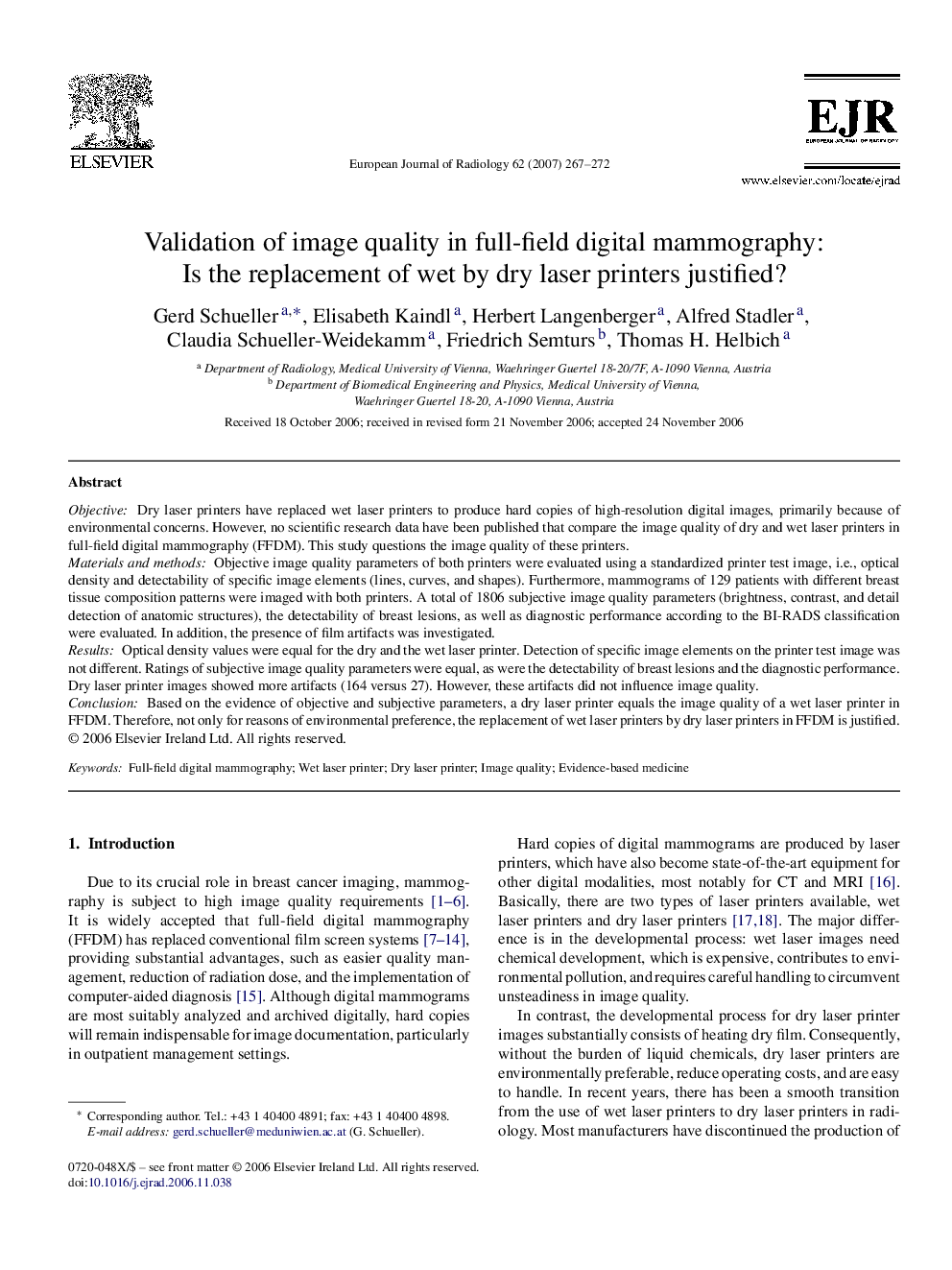| Article ID | Journal | Published Year | Pages | File Type |
|---|---|---|---|---|
| 4228405 | European Journal of Radiology | 2007 | 6 Pages |
ObjectiveDry laser printers have replaced wet laser printers to produce hard copies of high-resolution digital images, primarily because of environmental concerns. However, no scientific research data have been published that compare the image quality of dry and wet laser printers in full-field digital mammography (FFDM). This study questions the image quality of these printers.Materials and methodsObjective image quality parameters of both printers were evaluated using a standardized printer test image, i.e., optical density and detectability of specific image elements (lines, curves, and shapes). Furthermore, mammograms of 129 patients with different breast tissue composition patterns were imaged with both printers. A total of 1806 subjective image quality parameters (brightness, contrast, and detail detection of anatomic structures), the detectability of breast lesions, as well as diagnostic performance according to the BI-RADS classification were evaluated. In addition, the presence of film artifacts was investigated.ResultsOptical density values were equal for the dry and the wet laser printer. Detection of specific image elements on the printer test image was not different. Ratings of subjective image quality parameters were equal, as were the detectability of breast lesions and the diagnostic performance. Dry laser printer images showed more artifacts (164 versus 27). However, these artifacts did not influence image quality.ConclusionBased on the evidence of objective and subjective parameters, a dry laser printer equals the image quality of a wet laser printer in FFDM. Therefore, not only for reasons of environmental preference, the replacement of wet laser printers by dry laser printers in FFDM is justified.
